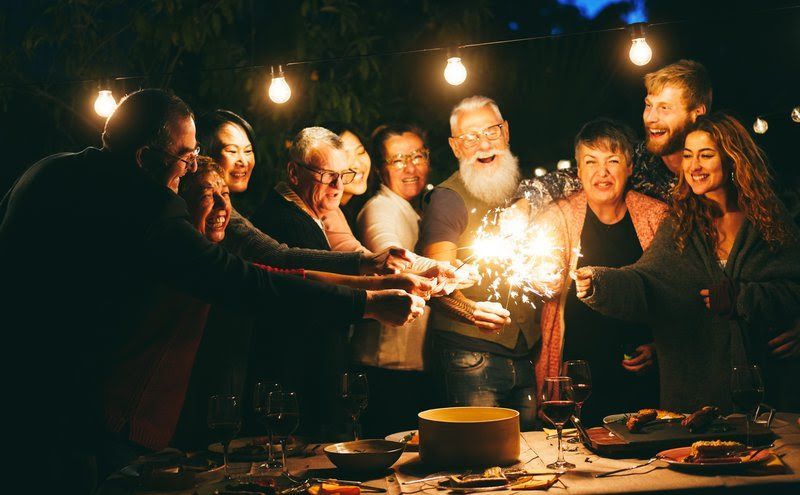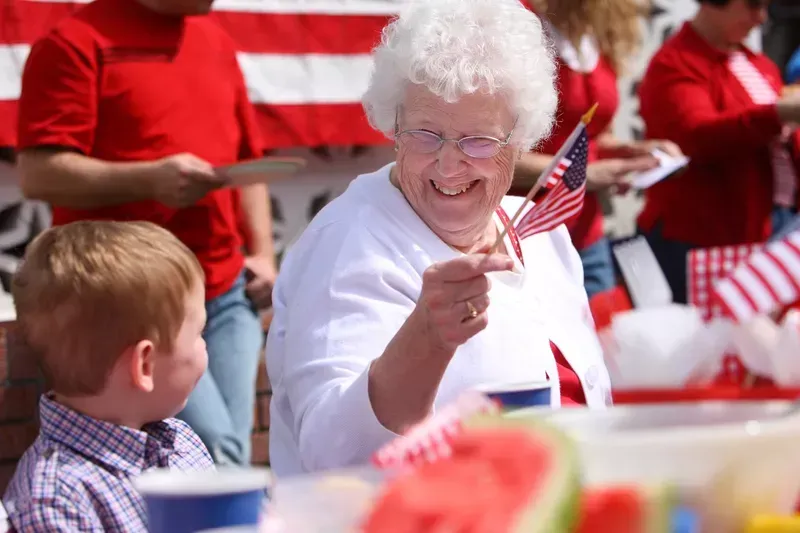BLOG
Holiday Traditions in Assisted Living: Creating Meaningful Celebrations for Seniors
The holiday season holds a special place in the hearts of many, evoking memories of family gatherings, cherished traditions, and festive celebrations. For seniors residing in assisted living communities, maintaining these traditions can provide a sense of continuity and joy.
Assisted living facilities facilitate meaningful holiday experiences that honor residents' past while embracing the present. Through thoughtful planning and community involvement, these celebrations can foster a sense of belonging and happiness among seniors.
Embracing Familiar Traditions in Assisted Living
Maintaining familiar holiday traditions can provide comfort and a sense of normalcy for seniors in assisted living. Activities such as decorating Christmas trees, lighting Hanukkah candles, or preparing traditional meals can evoke positive memories and emotions.
Incorporating residents' traditions into community celebrations acknowledges their individual histories and preferences. Engaging residents in planning and executing these traditions fosters a sense of ownership and participation.

Collaborating with residents to share their favorite holiday stories or recipes can enrich the community's cultural tapestry. Organizing storytelling sessions or recipe exchanges allows residents to connect over shared experiences. Encouraging residents to lead or co-host events can further enhance their sense of purpose and engagement.
Involving families in traditional celebrations can bridge the gap between past and present holiday experiences. Inviting family members to participate in decorating, cooking, or attending events reinforces familial bonds.
Such involvement can alleviate feelings of isolation and enhance the overall festive atmosphere. Facilitating intergenerational activities, like crafting or singing, can create lasting memories for both residents and their families.
Introducing New Festive Activities
While honoring traditions is vital, introducing new activities can invigorate the holiday season for seniors in assisted living. Novel experiences can stimulate cognitive function and provide fresh avenues for social engagement. Organizing themed events, such as holiday movie nights or musical performances, can add variety to the festive calendar.
Incorporating technology-based activities, like virtual tours of holiday markets or online concerts, can expand residents' experiences beyond the facility. Providing necessary support and equipment ensures that all residents can partake in these virtual festivities. Such initiatives can also connect residents with global holiday traditions, enriching their cultural understanding.
Creative workshops, such as ornament making or holiday card crafting, can foster a sense of accomplishment and creativity. Displaying residents' creations throughout the facility can instill pride and enhance the festive ambiance. Engaging local artists or volunteers to lead sessions can introduce new skills and perspectives.
Organizing community service projects, like assembling care packages or writing letters to deployed soldiers, can instill a sense of purpose. Participating in altruistic activities during the holidays can boost residents' morale and foster community spirit. Collaborating with local organizations can provide meaningful outlets for residents to contribute positively to society.
Evaluating the impact of new activities through resident participation rates and feedback can inform future programming. Monitoring engagement levels can help identify successful initiatives and areas for improvement. Soliciting resident suggestions for new activities can further personalize the holiday experience. Balancing traditional and innovative events ensures a dynamic and inclusive festive season.
Fostering Family and Community Involvement in Assisted Living
Engaging families in holiday celebrations within assisted living facilities can strengthen familial bonds and enhance residents' emotional well-being. Inviting family members to participate in events, such as holiday dinners or performances, fosters a sense of inclusion. Providing flexible visiting hours during the holiday season can accommodate diverse family schedules.
Collaborating with local schools, churches, or community groups to involve them in holiday events can enrich the festive atmosphere. Hosting intergenerational activities, like caroling or storytelling sessions, can bridge generational gaps and promote mutual understanding. Establishing ongoing partnerships with community organizations can sustain these beneficial engagements.
Providing access to video calls or livestreamed events allows families to be present, even from afar. Staff can assist residents with technology to ensure seamless virtual participation. Emotional well-being improves significantly when seniors feel connected to their family during meaningful occasions.
Creating volunteer opportunities for family and community members can enhance the holiday experience for residents. Whether through helping with decorations or serving meals during celebrations, their involvement is invaluable. Community participation reinforces the feeling of a vibrant and inclusive environment.
Surveying families and community partners after events can provide insights into what worked well and what could be improved. Gathering feedback from participants helps refine future holiday programming. It also gives families a voice in how traditions evolve within the community.
Supporting Residents with Cognitive or Physical Limitations
Seniors in assisted living often face physical or cognitive challenges that can make traditional holiday participation more difficult. Tailoring celebrations to meet their unique needs ensures everyone feels included. Activities such as hand-over-hand crafts, sensory-focused experiences, or music therapy sessions can provide joy without causing fatigue. Thoughtful planning demonstrates respect for every resident's abilities and preferences.
For residents with dementia or memory loss, simplified traditions rooted in routine can offer meaningful engagement. Listening to familiar holiday music or decorating with known symbols can evoke comforting memories. Staff can incorporate reminiscence therapy into events to help seniors reconnect with past experiences. Emotional connection remains the priority over the complexity of the activity.

Physical limitations can be accommodated through strategic event setup and accessible venues. Creating holiday experiences on each residential floor, rather than one central event, increases participation. Using mobility aids and providing seating options ensures everyone can enjoy festivities comfortably. Safety measures must be integrated into all event planning for residents with balance or endurance concerns.
Sensory-friendly alternatives are imporessentialresidents sensitive to noise, lights, or crowds. Offering quiet viewing times for decorations or holding low-stimulation events creates a welcoming environment for all. Staff training is crucial for recognizing and responding to individual sensory needs. An inclusive holiday approach benefits individuals and the broader community atmosphere.
Creating a Warm, Festive Environment in Assisted Living
The physical environment of an assisted living community greatly influences how residents experience the holidays. Transforming shared spaces into festive, seasonal settings can boost morale and invite cheerful participation. Involving residents in decorating allows them to express creativity and ownership. Simple touches like garlands, lights, or nostalgic ornaments can make common areas feel like home.
Scent, sound, and sight can work together to create a multisensory celebration that stimulates memory and emotion. Playing classic holiday tunes or diffusing familiar seasonal aromas can evoke strong emotional responses. Warm lighting and cozy textiles add to the ambiance of comfort and tradition. Engaging the senses contributes to an immersive and uplifting atmosphere.
Staff involvement in creating the festive environment is key to its success. When caregivers participate in decorating or dressing up for themed days, it encourages resident engagement. Their enthusiasm sets the tone and strengthens bonds within the community. Residents often mirror the energy and spirit of the staff around them.
Rotating seasonal themes throughout December can provide variety and ongoing excitement. Highlighting different cultural holidays allows for educational and inclusive celebrations. Featuring traditions from various cultures within the resident population shows respect and encourages cultural appreciation. Celebrating Kwanzaa, Hanukkah, and Christmas in the same season creates a welcoming environment for all.
Bringing Holiday Joy to Every Resident
At Assured Senior Living, we believe every senior deserves a season filled with warmth, connection, and joyful tradition. Our dedicated care teams thoughtfully design holiday celebrations that honor residents' individual histories while building new community memories. Our person-centered approach allows each resident to experience the holidays in ways that are meaningful to them.
To learn more about how Assured Senior Living creates enriching, festive environments for seniors year-round, schedule a visit to one of our residential memory care homes. Let us show you how we bring family, community, and joy into every season.














